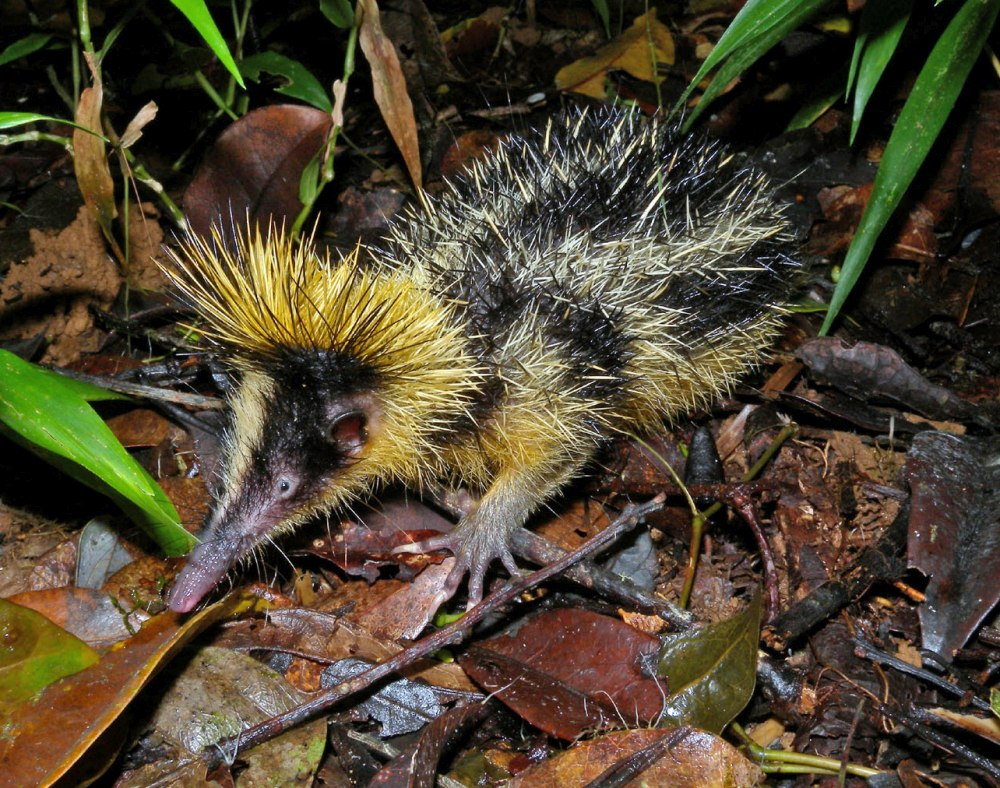A Wildlife Hospital in the U.K. recently received a unique ‘guest’ – a flamboyant-looking bird that caught the attention of some kind-hearted individuals. Found stranded by the roadside and unable to fly, the bright orange bird appeared to be of tropical origin, prompting the concerned citizens to take it to the Tiggywinkles Wildlife Hospital for medical attention. However, it was later discovered that the seemingly exotic bird was in fact a common seagull that had managed to cover itself entirely in curry.
More info: Tiggywinkles Wildlife Hospital
“This is one of the strangest casualty circumstances we have seen in a while!”
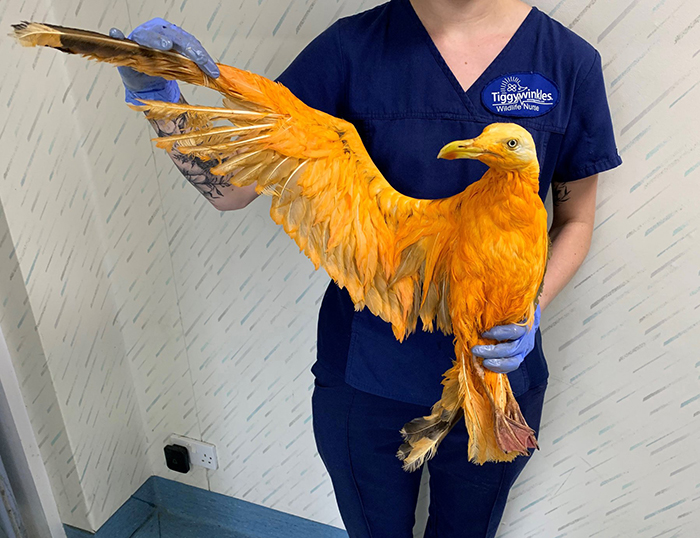
Tiggywinkles Wildlife Hospital took to their Facebook page to share the story of a rescued herring gull that had caught the attention of some compassionate passersby. The kind-hearted individuals had noticed the bright-orange bird stranded at the side of the A41 and immediately took action to help. When the hospital received the call about an “orange bird,” they had no idea what to expect and were surprised to find the unique-looking herring gull in their care.
“He had somehow gotten himself covered in curry or turmeric”
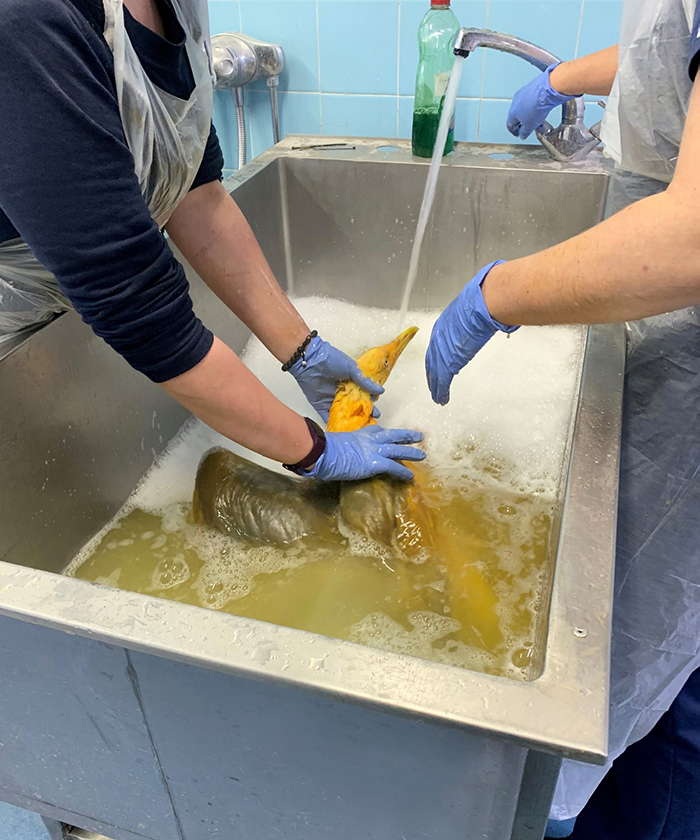
The veterinarians at the Tiggywinkles Wildlife Hospital made a startling discovery when they examined the rescued herring gull. According to them, the bird was covered from head to toe in curry, which had made it difficult for him to fly normally. Despite the strange and pungent appearance of the bird, the veterinarians were relieved to find that he was in good health. As they pondered on how the bird had ended up in this situation, they couldn’t help but marvel at the sheer absurdity of the situation.
“Apart from the vibrant colour and pungent smell, he was healthy”
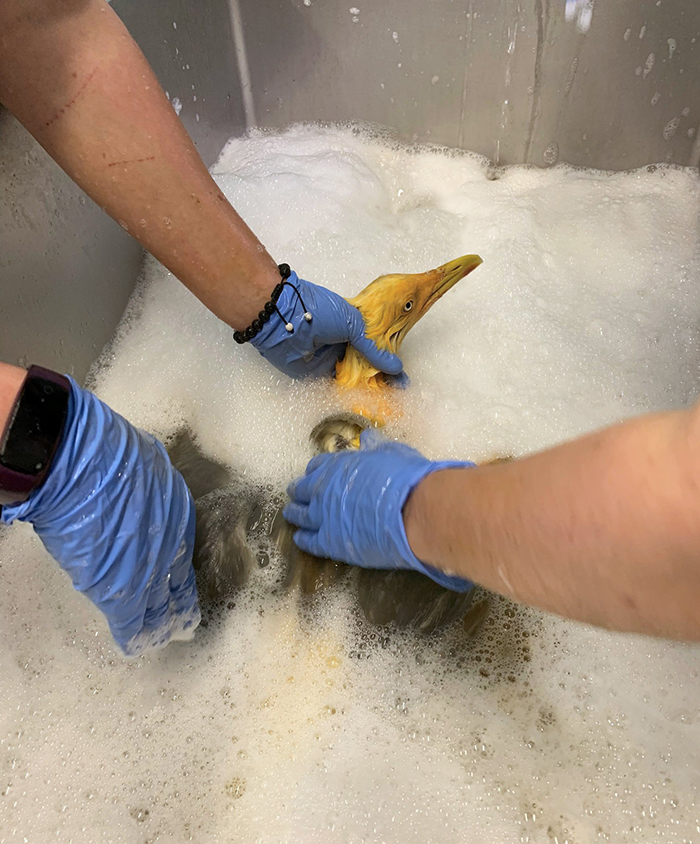
Vinny, the herring gull that was rescued and brought to the Tiggywinkles Wildlife Hospital, was given a much-needed bath by the veterinary team. The bird had been covered in curry, which had made his feathers sticky and difficult to clean. Despite initially protesting the cleaning process, Vinny eventually allowed the team to wash him thoroughly. In fact, the bird looked quite handsome after his bath, although he did seem slightly irritated with the entire ordeal. The veterinary team even named him Vinny, after the spicy Vindaloo curry that he was covered in.
“He is now looking much better and should be able to go for release very soon”
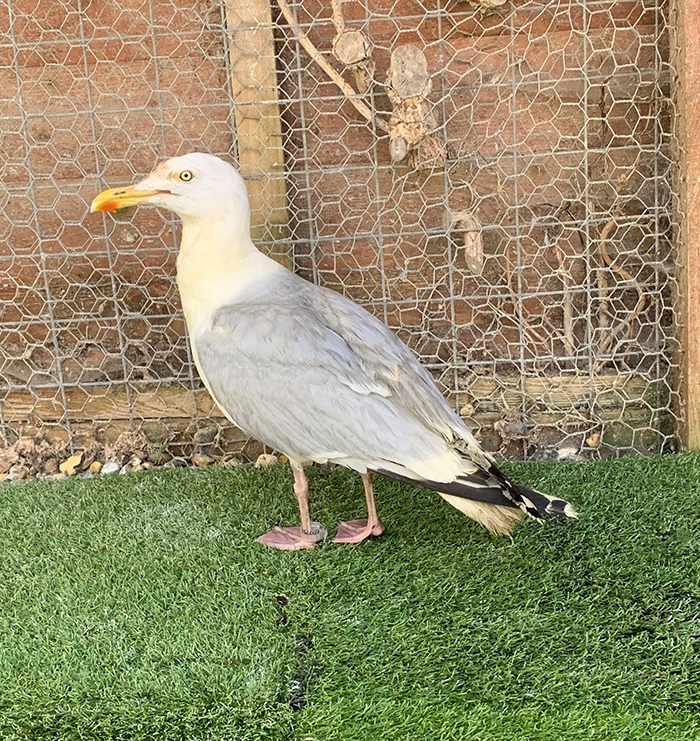
Tiggywinkles Wildlife Hospital expressed their gratitude towards the kind individuals who had rescued Vinny, the herring gull, from his curry-covered predicament. The hospital staff noted that they are always prepared for the unexpected and never know what kind of animals may need their help. Nevertheless, they were glad to be able to assist Vinny and ensure that he was healthy and clean once again. As they bid farewell to the unique-looking bird, the staff at Tiggywinkles Wildlife Hospital hoped that Vinny had learned his lesson and wouldn’t find himself in such a sticky situation again.


